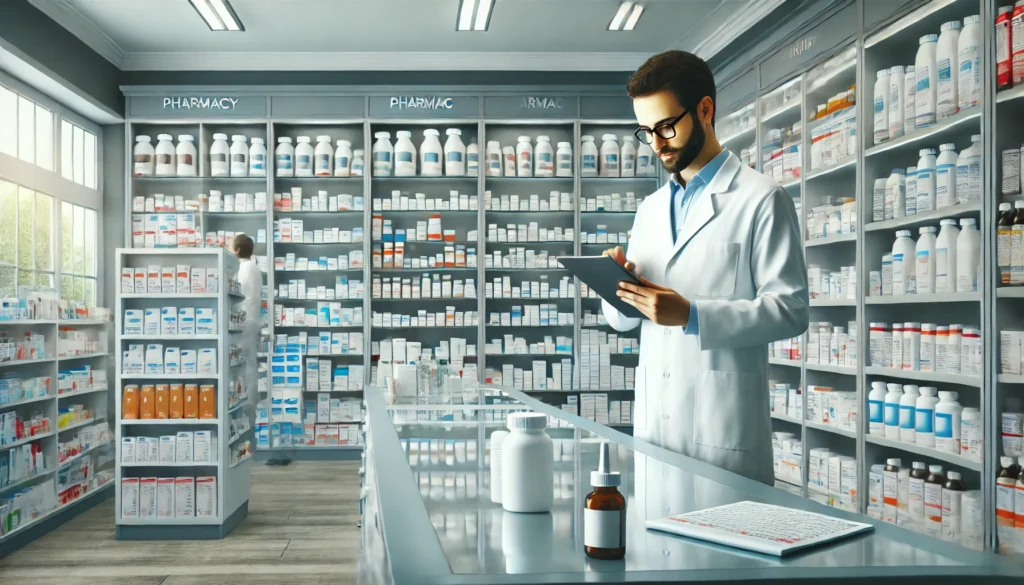When I first stepped into the world of pharmacy operations, I had no idea how complex and fast-paced it could be. Managing a pharmacy isn’t just about dispensing medications—it involves inventory control, regulatory compliance, customer service, and technology integration.
Whether you’re a pharmacy student, a pharmacist, or someone interested in understanding how pharmacies run smoothly, this article will give you an inside look at pharmacy operations. I’ll walk you through the key aspects, challenges, and strategies for running a successful pharmacy while ensuring efficiency, compliance, and excellent patient care.
What Are Pharmacy Operations?

Pharmacy operations refer to the day-to-day management of a pharmacy. This includes everything from medication procurement and storage to prescription filling, compliance with laws, and patient interaction. A well-run pharmacy ensures that:
✔ Patients receive the right medications on time
✔ Pharmacists and technicians work efficiently
✔ Inventory is well-managed to prevent shortages or waste
✔ Regulations and safety standards are followed
In my experience, pharmacy operations require both technical knowledge and strong organizational skills to keep everything running smoothly.
Key Aspects of Pharmacy Operations
To run an efficient pharmacy, you need to focus on several critical areas. Here’s what I’ve learned along the way:
1. Prescription Management
One of the main responsibilities of a pharmacy is handling prescriptions efficiently. This includes:
🔹 Receiving and verifying prescriptions from doctors
🔹 Checking for drug interactions and contraindications
🔹 Filling prescriptions accurately and efficiently
🔹 Providing patient counseling on medication usage
Modern pharmacies use electronic prescription systems (eRx) to reduce errors and improve speed. I’ve found that clear communication with healthcare providers and patients is key to smooth prescription management.
2. Inventory Management and Stock Control
Managing inventory is a huge part of pharmacy operations. A pharmacy must ensure that medications are always in stock but not overstocked to avoid waste. Some best practices include:
✔ Using an automated inventory system to track stock levels
✔ Monitoring expiration dates to prevent dispensing expired medications
✔ Ordering medications based on demand trends
✔ Preventing theft or loss through strict security measures
I’ve seen pharmacies struggle when they don’t have a proper inventory system in place. Trust me—having real-time stock tracking saves time and reduces stress!
3. Regulatory Compliance and Safety Standards
Pharmacies must follow strict regulations set by government agencies like the FDA, DEA, and state pharmacy boards. Compliance ensures patient safety and prevents legal issues. Some key regulations include:
🔹 HIPAA compliance to protect patient data
🔹 Proper handling of controlled substances to prevent abuse
🔹 Accurate record-keeping for audits and inspections
🔹 Labeling and storage guidelines for different medications
As someone who has worked in pharmacy operations, I can’t stress enough how important it is to stay updated on changing regulations. Non-compliance can lead to heavy fines or even pharmacy closure.
4. Technology in Pharmacy Operations
Technology plays a big role in improving efficiency and accuracy. Modern pharmacies use:
🖥 Pharmacy Management Software (PMS) – Automates inventory, prescriptions, and billing.
📱 Mobile Apps for Refills – Allows patients to request refills easily.
🔍 AI and Data Analytics – Helps in predicting demand for medications.
💳 Digital Payment Systems – Provides cashless transactions for better convenience.
Implementing these tools has made pharmacy operations faster, safer, and more customer-friendly.
5. Customer Service and Patient Care
One thing I quickly realized is that a pharmacy is not just about medications—it’s about people. Patients rely on pharmacists for:
✔ Clear explanations about medications
✔ Guidance on side effects and interactions
✔ Help with insurance and cost-saving options
✔ Friendly and fast service
Providing excellent customer service not only improves patient satisfaction but also builds trust and loyalty. A well-trained pharmacy team is crucial in this aspect.
Common Challenges in Pharmacy Operations

Even with the best systems in place, running a pharmacy comes with challenges. Some issues I’ve encountered include:
🚨 Medication shortages – Sometimes, suppliers run out of essential drugs. Having backup vendors helps.
🕒 Long wait times – High patient volume can lead to delays. Automation and staffing adjustments can fix this.
💰 Rising drug prices – Many patients struggle with high medication costs. Providing generic alternatives and discount programs helps.
📜 Regulatory changes – Pharmacy laws constantly evolve. Staying informed through continuing education is essential.
By anticipating these challenges and preparing solutions, pharmacies can ensure smooth operations.
Best Practices for Running a Successful Pharmacy
After working in pharmacy operations, I’ve learned a few strategies that make a huge difference in efficiency and patient satisfaction:
✔ Automate as much as possible – Use technology to streamline inventory, prescriptions, and billing.
✔ Train and educate staff regularly – A knowledgeable team improves accuracy and service quality.
✔ Monitor and optimize workflow – Identify bottlenecks and find ways to improve efficiency.
✔ Prioritize customer service – Happy patients mean repeat customers and positive reviews.
✔ Stay compliant with laws – Avoid legal trouble by keeping up with licensing, audits, and safety regulations.
Following these practices has helped me (and many others) maintain smooth and successful pharmacy operations.
The Future of Pharmacy Operations
The world of pharmacy is evolving rapidly. Here are some emerging trends that will shape the future of pharmacy operations:
🌿 Telepharmacy – Remote pharmacy services for rural and underserved areas.
🧬 Personalized medicine – AI-driven prescriptions tailored to individual patients.
📦 Drone delivery – Faster and more efficient medication deliveries.
🛒 E-commerce in pharmacy – Online medication ordering and doorstep delivery.
Keeping up with these trends can help pharmacies stay competitive and continue providing top-notch patient care.
FAQ’s
1. What are pharmacy operations?
Pharmacy operations involve the management of daily pharmacy tasks, including prescription filling, inventory control, customer service, and compliance with healthcare regulations.
2. Why is inventory management important in a pharmacy?
Proper inventory management ensures that medications are always available, prevents waste from expired drugs, and helps maintain cost efficiency in pharmacy operations.
3. How does technology improve pharmacy operations?
Pharmacies use management software, AI, and automation to speed up prescription processing, reduce errors, track inventory, and provide better patient services.
4. What are the biggest challenges in pharmacy operations?
Common challenges include medication shortages, high drug prices, regulatory changes, and long patient wait times. Efficient workflow and technology can help overcome these issues.
5. How can pharmacies improve customer service?
Providing fast, accurate service, clear medication guidance, and friendly interactions helps build patient trust and ensures customer satisfaction.
Final Thoughts: Why Pharmacy Operations Matter
Running a pharmacy isn’t just about dispensing medications—it’s about efficiency, safety, and patient care. From managing prescriptions and inventory to ensuring compliance and leveraging technology, every part of pharmacy operations plays a crucial role in healthcare. If you’re considering a career in pharmacy operations or managing a pharmacy, focus on continuous learning, adopting technology, and prioritizing patient needs. With the right strategies, you can build a successful, patient-friendly, and compliant pharmacy.
Related Post
- mylovelyfurryfriend discover expert tips on dog health
- Infectious Diseases Updates – Stay Informed, Stay Protected!
- Wegovy For Weight Loss – A Breakthrough in Managing Obesity!
- Emergency Medicine Forum – A Hub for Fast-Paced Knowledge, Support & Updates!
- Pediatrics Discussions – Insights, Challenges, and Expert Advice for Better Child Health!





Leave a Reply